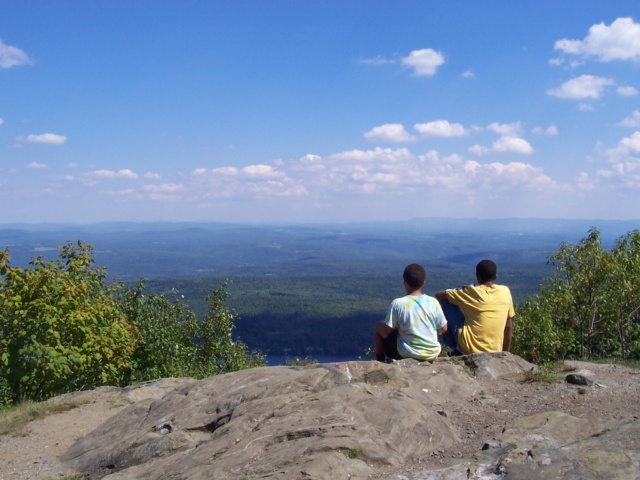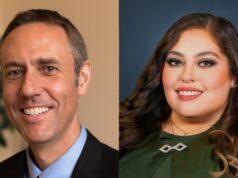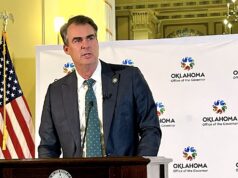
On the eve of the spring testing season, we are talking less about the need to teach to the test. I wish the OKCPS could make a clean break and explicitly renounce the bubble-in malpractice of the last decade and a half. Teachers and principals should be told that they are now free to ignore test scores and focus on holistic and meaningful instruction that respects the dignity of our children.
I doubt we will make a clean break. I expect bubble-in pedagogies — that often cross the line into education malpractice — will slowly fade away. But, recent articles in The Oklahoman about A+ Schools and science, technology, engineering and math (STEM) instruction provide signs of hope, as do the values articulated by the Northeast Task Force.
For extremely complex reasons, soul-killing basic-skills instruction has been the most ubiquitous in our highest-challenge schools, especially in northeast Oklahoma City. In the name of school “reform,” second-rate teaching, which the late Martin Haberman derided as “the Pedagogy of Poverty,” was rebranded as an instructional “best practice.”
My John Marshall and Centennial students consistently reported a clear pattern. Those who transferred from schools inside and outside of the OKCPS and the metro area shared completely different stories about diverse classroom experiences. The kids who came up from the poorest parts of our feeder groups recounted the same narrative: They had been robbed of a meaningful education, receiving a steady diet of worksheet-driven instruction for standardized tests.
It is hard for fearful educators to renounce teaching to their list of measurable, testable, aligned and paced “standards of instruction.” They have to worry about budgetary problems and more. What if we can’t find the money and the will to properly establish high-quality STEM programs? What if test scores fall during the transition away from test prep?
In my experience, the first rule of teaching should be: Listen to the kids, and they will teach us how to teach them. The corollary is that students’ moral consciousnesses are the rock on which real learning is built. Teaching STEM holistically in the inner city is an invaluable way to show respect for poor children of color. And the successes described below are inexpensive. They mostly require a change in our mindset.
The kids taught me
The first time I took inner-city kids camping and fossil hunting, I became hooked by my new calling. A third-grader found a “real live dinosaur nose! It still has blood on it!”
This was during the worst of the crack and gangs era of the 1980s. My kids mostly came from the old Moon Middle School feeder group. Many were enduring traumas that seemed incomprehensible.
My first classroom as an environmental educator was the Arbuckle Mountains, where “twice this ancient mountain range had been worn away. But three times it rose from the sea.” We identified plants and animals that flourished “where the American South met the West, and as a result we had as much biodiversity as anywhere in the continent. Biodiversity is … ”
This advanced lesson gained the children’s rapt attention, and, as always, the kids taught me how to teach them. When adolescents discussed those lessons, they described the environmental patterns as metaphors for their lives. The teens repeatedly raised the issue of respecting the diversity of people as well as biomes. These kids, who had survived so much, loved lessons that they could appropriate for reassurance that people who have been beaten down, like mountain ranges, can rise again.
Volunteering at the old Harding Middle School’s “Saturday school” for students with discipline and attendance problems, I sought to turn the planned tree planting away from punishment and into an opportunity to master the carbon cycle.
The principal grinned as my lesson seemed to go through one set of ears and out the others. I coaxed compost into a few girls’ hands until one exclaimed: “So that’s worm dookie … ?” After the screams, the students pulled the trick on their friends and then recited the lesson they had appeared to ignore. Suddenly they were all on the way to understanding the process of biological decay and recycling.
I became a social studies teacher in Oklahoma City schools. During the next 18 years, my students and I shared the incredible joy of wrestling with a legitimate college-prep curriculum as well as the type of concepts that are now known as STEM. Before and after class discussions, I would ask the students to imagine a television camera in the room to broadcast our class and high-performing suburban schools’ classes on the nightly news. Wouldn’t the public be wowed by our class? Would the students in the suburbs be wrestling with equally profound issues in the deep and professional manner that we were?
During the MAPS for Kids process, my students also impressed a steady stream of local business and political leaders as they participated in the bipartisan reform coalition that raised taxes to rebuild our crumbling buildings and encourage the type of challenging, multidisciplinary learning that the community leaders shared with our students.
One hope was that the new Centennial High School, which was built on the border where the Southern Deciduous biome met the Great Plains biome, would include an outdoor classroom for project-based learning. It was the spot where, in 1832, Washington Irving exited the Cross Timbers and saw a buffalo herd on the shortgrass prairie. Since we could not afford to build the promised science wing, we hoped to provide hands-on environmental education, complete with field trips to science and art museums.
No Child Left Behind in 2001 eventually derailed our plans, and bubble-in malpractice became the norm. Centennial became the lowest-rated Oklahoma secondary school, and our chronic violence and mayhem was continually punctuated by pulled fire alarms.
Even so, when outside and waiting for the “all clear” announcement, my students again proved Haberman’s astute assertion.
Rethinking ‘problems’ as opportunities
The endless “problems” (school safety, a racial flare up, the dress code) are opportunities for important learning. Far from being viewed as obstacles to the “normal” school routine, difficult events and issues can be transformed into the very stuff of the curriculum. Schooling is living — not preparation for living.
The students craved respect, and they loved being intellectually challenged instead of having their time wasted by fake emergencies. Rather than just hang out until the school could be re-entered, we’d create an ad hoc outdoor classroom, identifying the different types of adaptations and leaf patterns of the humid east and the arid west. Some tasted the seeds from cedars and cacti. The kids studied the neighboring windmills and designed passive energy systems.
This could serve as a metaphor for the OKCPS as a whole. Test-driven, competition-driven school reform was a panicked reaction to a fake fire alarm that made it impossible to listen to each other.
The fearful screeching still echoes in our hallways, but adult fears pose the biggest barrier to reclaiming the goal of a meaningful 21st-century education for all.
We need to find our courage in kids’ hungry hearts.





















